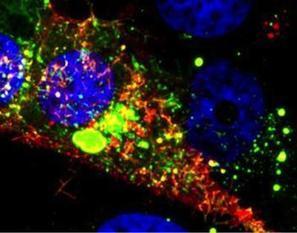By the time they're two, most children have had respiratory syncytial virus (RSV) and suffered symptoms no worse than a bad cold. But for some children, especially premature babies and those with underlying health conditions, RSV can lead to pneumonia and bronchitis - which can require hospitalization and have long-term consequences.
A new technique for studying the structure of the RSV virion and the activity of RSV in living cells could help researchers unlock the secrets of the virus, including how it enters cells, how it replicates, how many genomes it inserts into its hosts - and perhaps why certain lung cells escape the infection relatively unscathed. That could provide scientists information they need to develop new antiviral drugs and perhaps even a vaccine to prevent severe RSV infections.
"We want to develop tools that would allow us to get at how the virus really works," said Philip Santangelo, an associate professor in the Wallace H. Coulter Department of Biomedical Engineering at Georgia Tech and Emory University. "We really need to be able to follow the infection in a single living cell without affecting how the virus infects its hosts, and this technology should allow us to do that."



 Your new post is loading...
Your new post is loading...







